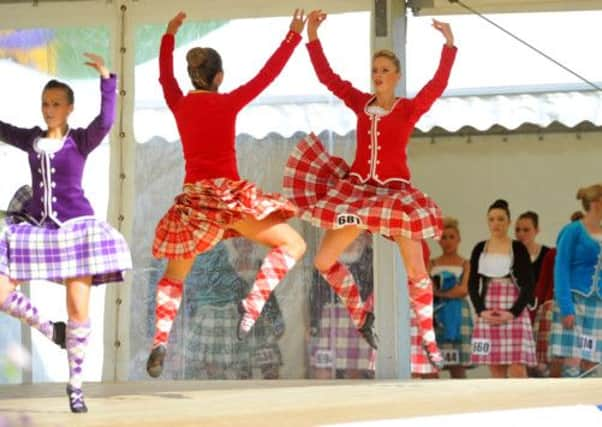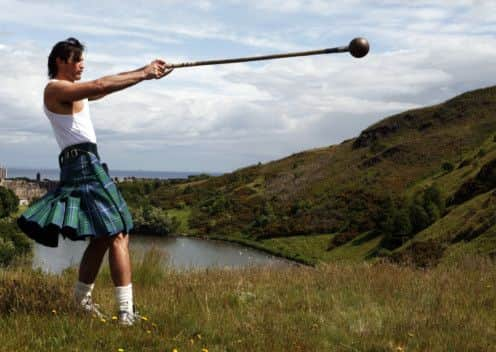Scottish fact of the week: Highland Games


Envision the myriad wildlife; roving packs of deer and rutting stags, the Capercaillie and Grouse hiding amongst the pines while Golden eagle pairs soar over head.
Here, amongst such wonderful surroundings, the Highland games are set. These events are held throughout the year to celebrate Scottish culture, games that are a riot of colour and noise and are usually great fun.
Advertisement
Hide AdThe more ubiquitous of the games, such as the caber toss, hammer throw and stone putt are well known, however some are less so, such as the Sheaf toss, the throwing of small bales of hay, and the Maide Leisge (Gaelic for ‘lazy stick’) which involves two competitors sitting across from each other, soles of their feet pressed against the other’s, each holding the side of a stick, which they then must use to pull the other to their feet.


The Games are not just famous for the sporting contests however; the mass groupings of piping bands draw in bigger crowds than the games themselves and traditional dances such as sword dancing and the Seann Truibhlas, the dance of the shedding of the trousers, are always popular events.
Both the piping and dancing are subject to competition themselves with many prizes and medals being given out on the day to the best solo and group performers.
The Games have been around in some form for centuries; however it was the royal patronage of Queen Victoria that really formalised them as they are in their modern embodiment. Surprisingly, this patronage was not the only English influence on the modern games.
Indeed, the modern kilt, the am feile beag or small kilt, was introduced by an Englishman, Thomas Rowlandson, in 1727 to combat the unwieldiness of the fiele mor or big kilt, his work force of Scottish highlanders normally wore.
The words kilt and tartan cannot claim Scottish heritage either; kilt is English and is usually used as a verb to mean the business of hitching up a skirt and tucking it in at the waist, while Tartan is a derivative of the French word tiretaine, meaning heavy material with no particular colour, ironic when considering its current use.
Advertisement
Hide AdIn modern times, the Highland games have spread across the globe, with countries such as the US and Canada - steeped in Scottish heritage - joining other nations with less of a connection to Scotland, such as Hungary, Bermuda, Indonesia and Switzerland in celebrating them annually.